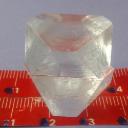Yahoo Answers is shutting down on May 4th, 2021 (Eastern Time) and beginning April 20th, 2021 (Eastern Time) the Yahoo Answers website will be in read-only mode. There will be no changes to other Yahoo properties or services, or your Yahoo account. You can find more information about the Yahoo Answers shutdown and how to download your data on this help page.
Trending News
Okay, so the Fed prints more money. How does this "new" money get put into circulation.?
I understand about replacing worn currency. What I didn't understand is when they print more than they distroy how they get that into circulation. So, if it is loaned to the banks then it remains the property of the government and makes the gov income through interest payments?
5 Answers
- shootingthebullsLv 41 decade agoFavorite Answer
If you are referring to the printing of bills to replace worn out bills.
The Federal Reserve doesn't print money. The Bureau Of Printing and Engraving (BEP) handles the printing of all bills. The BEP is part of the Department of the Treasury. Old money just gets exchanged. Basically, the old bill for the new bill. Banks take old ripped taped up bills and sets them aside then they turn them in a get it exchanged for new bills.
The BEP prints billions of Federal Reserve Notes for delivery to the Federal Reserve System each year (the BEP does not produce coins – all coinage is minted by the United States Mint).
If you are asking about new money getting into the economy...
The Federal Reserve distributes that new money into the economy by controlling the federal funds rate. In the United States, the federal funds rate is the interest rate at which private depository institutions (mostly banks) lend balances (federal funds) at the Federal Reserve to other depository institutions, usually overnight.
Raising the Federal funds rate will dissuade banks from taking out such inter-bank loans, which in turn will make cash that much harder to procure. Conversely, dropping the interest rates will encourage banks to borrow money and therefore invest more freely.
- CRFILv 61 decade ago
As new loans.Banks were not giving loans between each other because they ignore who is not on bankruptcy.
The problem is , What´s the real size of the problem?How many trillons are we talking about? Are 200,000,000,000 dollars enough?
Our forecast is ,Crisis will spread to the whole world.USA will be forced to apply protectionist policies,this will dammage International Commerce.
I dont need to tell you that We, Bolsheviks, are happy.
PD, Loans will be used to speculate on commodities( as long as this new bubble doesnt explode ) , that´s what I would do if I was a Banker with all that money at 0% interst rate...
--------
Of course banks must "pay" that loans , that´s why the interest rate is negative ( inflation is higgher than interest rate).
- Anonymous1 decade ago
its the money that the bank's will borrow from the fed.
also when you deposit money to the bank and the bill are old and worn out. those bills are destoryed and replaced with new money. did you notice that 90% of the bills you get from the bank are crispy and new.
- How do you think about the answers? You can sign in to vote the answer.






